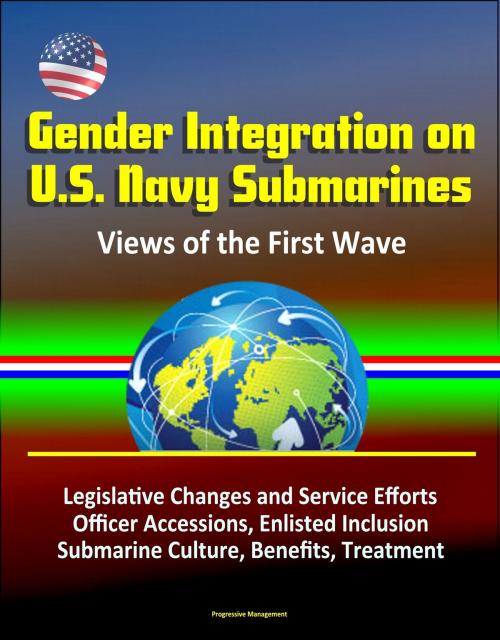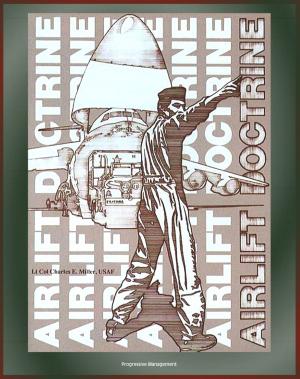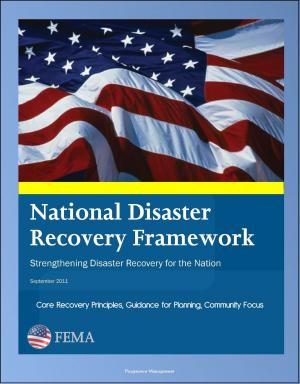Gender Integration on U.S. Navy Submarines: Views of the First Wave - Legislative Changes and Service Efforts, Officer Accessions, Enlisted Inclusion, Submarine Culture, Benefits, Treatment
Nonfiction, History, Military, Nuclear Warfare, Naval| Author: | Progressive Management | ISBN: | 9781311418333 |
| Publisher: | Progressive Management | Publication: | March 23, 2016 |
| Imprint: | Smashwords Edition | Language: | English |
| Author: | Progressive Management |
| ISBN: | 9781311418333 |
| Publisher: | Progressive Management |
| Publication: | March 23, 2016 |
| Imprint: | Smashwords Edition |
| Language: | English |
Professionally converted for accurate flowing-text e-book format reproduction, this report is an ethnographic case study documenting the experiences of the first group of women integrated into the United States Submarine Force. The study seeks to: 1) document the process through which each of the women was selected and became a submariner; 2) identify hindering and supporting issues and concerns (e.g., life-work balance, job-role expectations, and career development); 3) describe the organizational culture and cultural change drivers; 4) identify and describe how the women's experiences affected both their professional and personal lives; and 5) identify the benefits of gender integration for the submarine force as expressed by the women integrated.
The methodology included a combination of qualitative research methods from ethnographic and case studies. Data was collected and analyzed for themes in order to answer the research questions. Fifteen female submarine officers, including 11 from the first group integrated, were interviewed using semi-structured questions during January-May 2015. The responses were recorded and transcribed. The interviews focused on the following themes: general experience, supporting and hindering factors, submarine culture effects, personal and professional impacts, and benefits.
This project creates an organized, qualitative data set detailing first-person accounts of a momentous occurrence in U.S. Navy history. This is a rich source of information that can be used in future studies to explore gender integration and organizational culture generally or more specifically aboard Navy submarines. Additionally, the preliminary analysis establishes a baseline for continued study of initial integration on submarines. The authors provide recommendations for further research to support gender integration in the United States military.
CHAPTER I * INTRODUCTION * CHAPTER II * BACKGROUND * A. WOMEN IN THE U.S. MILITARY * 1. Early America * 2. The American Civil War * 3. The World Wars * 4. Korea and Vietnam * B. WOMEN OF THE MODERN U.S. NAVY * 1. The Post-War Period * 2. Navy Breakthroughs of the 1970s and 1980s * 3. Direct Ground Combat * C. WOMEN ON SUBMARINES * 1. Legislative Changes and Service Efforts * 2. Officer Accessions * 3. Enlisted Inclusion. * D. CONCLUSION * CHAPTER III * METHOD * A. QUALITATIVE DESIGN AND RELEVANCE * B. CHOICE OF QUALITATIVE METHODS * 1. Ethnography * 2. Autoethnography * 3. Case Study * 4. Summary * C. DATA COLLECTION * 1. Study Setting * a. The Submarine * b. The Operational, Social and Physiological Environment * c. Selection * 2. Study Participants * 3. Data Collection Procedures * D. ROLES OF RESEARCHERS * E. STRENGTHS AND LIMITATIONS * F. CONCLUSION * CHAPTER IV * CASE SUMMARY AND ANALYSIS * A. PREFACE * B. THE POPULATION * C. THE GENERAL EXPERIENCE * D. SUPPORTING AND HINDERING FACTORS * 1. Differential Treatment * 2. Command Climate and Leadership * 3. Socialization Period * 4. Supply Officers as Dual-Purpose Mentors * 5. Supply Officers as Department Heads * E. SUBMARINE CULTURE EFFECTS * 1. Self-Sufficiency * 2. Respect and Professionalism * 3. Sleep Deprivation * 4. Intellectual Superiority and Constant Improvement * F. PERSONAL AND PROFESSIONAL IMPACTS * 1. Personal Growth * 2. Mentorship * 3. Retention * G. BENEFITS OF WOMEN'S INTEGRATION * 1. Diversity * 2. Crew Professionalism * 3. Communication * 4. Insight for Enlisted Integration * H. CONCLUDING NOTE * CHAPTER V * CONCLUSION * A. RESEARCH QUESTIONS AND ANSWERS. * B. SUGGESTIONS FOR FURTHER RESEARCH * APPENDIX A * ASSIGNMENT OF WOMEN IN THE NAVY * APPENDIX B * INITIAL EMBARKATION NOTICE * APPENDIX C * NAVADMINS ON ENLISTED INTEGRATION * APPENDIX D * INTERVIEW GUIDE * APPENDIX E * BIOGRAPHIES * A. LCDR KRYSTEN J. ELLIS, SC, USN * B. LT GAROLD I. MUNSON, USN * APPENDIX F * INTERVIEW SUMMARY SHEET * LIST OF REFERENCES
Professionally converted for accurate flowing-text e-book format reproduction, this report is an ethnographic case study documenting the experiences of the first group of women integrated into the United States Submarine Force. The study seeks to: 1) document the process through which each of the women was selected and became a submariner; 2) identify hindering and supporting issues and concerns (e.g., life-work balance, job-role expectations, and career development); 3) describe the organizational culture and cultural change drivers; 4) identify and describe how the women's experiences affected both their professional and personal lives; and 5) identify the benefits of gender integration for the submarine force as expressed by the women integrated.
The methodology included a combination of qualitative research methods from ethnographic and case studies. Data was collected and analyzed for themes in order to answer the research questions. Fifteen female submarine officers, including 11 from the first group integrated, were interviewed using semi-structured questions during January-May 2015. The responses were recorded and transcribed. The interviews focused on the following themes: general experience, supporting and hindering factors, submarine culture effects, personal and professional impacts, and benefits.
This project creates an organized, qualitative data set detailing first-person accounts of a momentous occurrence in U.S. Navy history. This is a rich source of information that can be used in future studies to explore gender integration and organizational culture generally or more specifically aboard Navy submarines. Additionally, the preliminary analysis establishes a baseline for continued study of initial integration on submarines. The authors provide recommendations for further research to support gender integration in the United States military.
CHAPTER I * INTRODUCTION * CHAPTER II * BACKGROUND * A. WOMEN IN THE U.S. MILITARY * 1. Early America * 2. The American Civil War * 3. The World Wars * 4. Korea and Vietnam * B. WOMEN OF THE MODERN U.S. NAVY * 1. The Post-War Period * 2. Navy Breakthroughs of the 1970s and 1980s * 3. Direct Ground Combat * C. WOMEN ON SUBMARINES * 1. Legislative Changes and Service Efforts * 2. Officer Accessions * 3. Enlisted Inclusion. * D. CONCLUSION * CHAPTER III * METHOD * A. QUALITATIVE DESIGN AND RELEVANCE * B. CHOICE OF QUALITATIVE METHODS * 1. Ethnography * 2. Autoethnography * 3. Case Study * 4. Summary * C. DATA COLLECTION * 1. Study Setting * a. The Submarine * b. The Operational, Social and Physiological Environment * c. Selection * 2. Study Participants * 3. Data Collection Procedures * D. ROLES OF RESEARCHERS * E. STRENGTHS AND LIMITATIONS * F. CONCLUSION * CHAPTER IV * CASE SUMMARY AND ANALYSIS * A. PREFACE * B. THE POPULATION * C. THE GENERAL EXPERIENCE * D. SUPPORTING AND HINDERING FACTORS * 1. Differential Treatment * 2. Command Climate and Leadership * 3. Socialization Period * 4. Supply Officers as Dual-Purpose Mentors * 5. Supply Officers as Department Heads * E. SUBMARINE CULTURE EFFECTS * 1. Self-Sufficiency * 2. Respect and Professionalism * 3. Sleep Deprivation * 4. Intellectual Superiority and Constant Improvement * F. PERSONAL AND PROFESSIONAL IMPACTS * 1. Personal Growth * 2. Mentorship * 3. Retention * G. BENEFITS OF WOMEN'S INTEGRATION * 1. Diversity * 2. Crew Professionalism * 3. Communication * 4. Insight for Enlisted Integration * H. CONCLUDING NOTE * CHAPTER V * CONCLUSION * A. RESEARCH QUESTIONS AND ANSWERS. * B. SUGGESTIONS FOR FURTHER RESEARCH * APPENDIX A * ASSIGNMENT OF WOMEN IN THE NAVY * APPENDIX B * INITIAL EMBARKATION NOTICE * APPENDIX C * NAVADMINS ON ENLISTED INTEGRATION * APPENDIX D * INTERVIEW GUIDE * APPENDIX E * BIOGRAPHIES * A. LCDR KRYSTEN J. ELLIS, SC, USN * B. LT GAROLD I. MUNSON, USN * APPENDIX F * INTERVIEW SUMMARY SHEET * LIST OF REFERENCES















